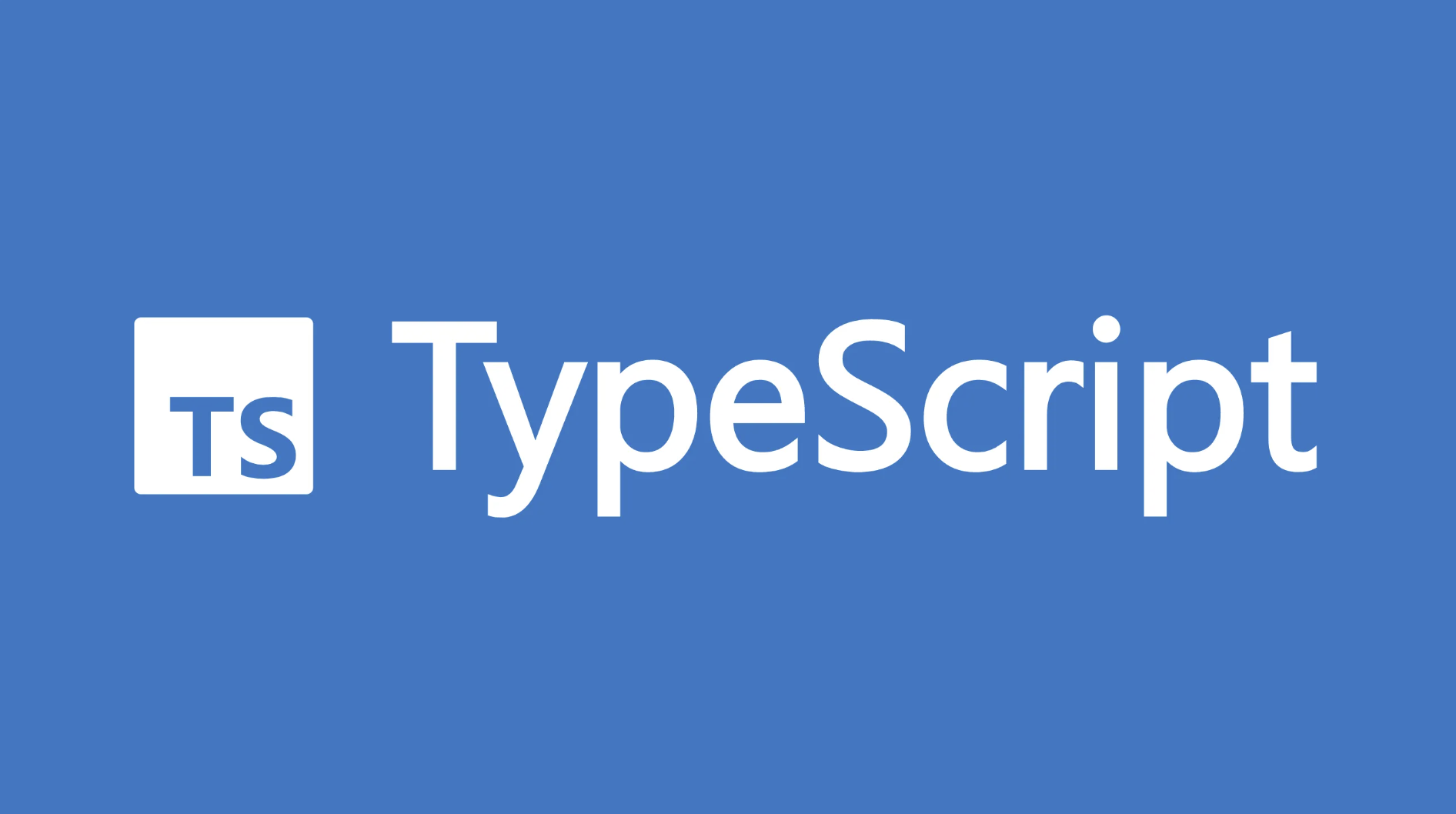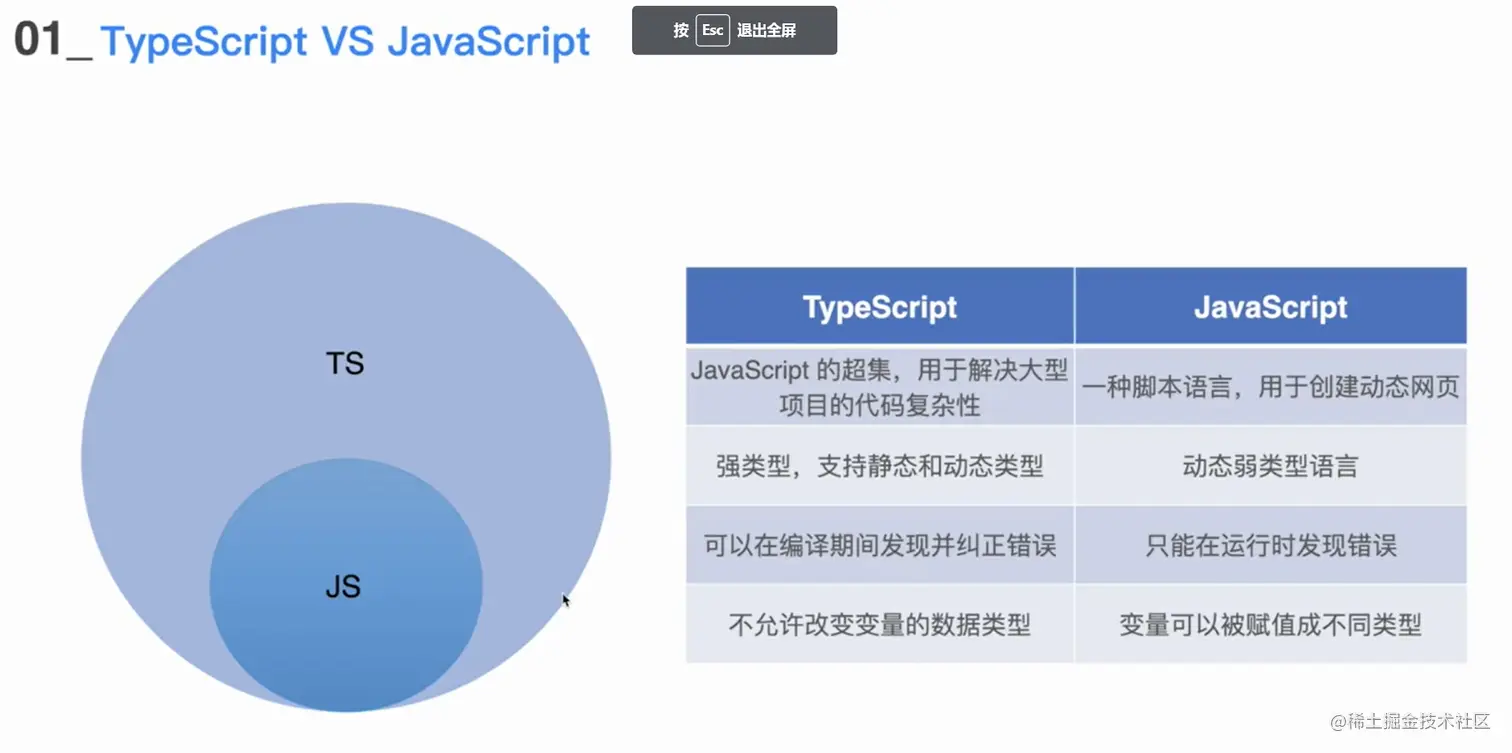TypeScript中的类型断言
TypeScript中的类型断言
翻译:疯狂的技术宅
作者:Dr. Axel Rauschmayer
正文共:1820 字
预计阅读时间:10 分钟

本文是关于 TypeScript 中的 type assertions 的,它与其他语言中的类型强制转换有相似之处,并通过 as 运算符执行。
类型断言
类型断言使我们可以覆盖 TypeScript 为存储位置计算的静态类型,这对于解决类型系统的限制很有用。
类型断言与其他语言中的类型强制转换有相似之处,但是它们不会引发异常,并且在运行时也不做任何事情(它们确实会静态执行一些少量的检查)。
1const data: object = ['a', 'b', 'c']; // (A)
2
3// @ts-ignore: Property 'length' does not exist on type 'object'.
4data.length; // (B)
5
6assert.equal(
7 (data as Array<string>).length, 3); // (C)- 在 A 行中,我们把 Array 的类型扩展为
object。 - 在 B 行中,我们看到此类型不允许访问任何属性。
- 在 C 行中,我们用类型断言(运算符
as)告诉 TypeScriptdata是一个Array。现在就可以访问属性.length了。
类型断言是不得已的方法,应尽可能的避免。他们(暂时)删除了静态类型系统为我们提供的安全网。
注意,在 A 行中,我们还覆盖了 TypeScript 的静态类型,不过是通过类型注释完成的。这种覆盖方式比类型声明要安全得多,因为你可以做的事情少得多。TypeScript 的类型必须能够分配给注释的类型。
类型断言的替代语法
TypeScript 对于类型断言有另一种“尖括号”语法:
1<Array<string>>data该语法已经过时,并且与 React JSX 代码(在 .tsx 文件中)不兼容。
示例:声明一个接口
为了访问任意对象 obj 的属性 .name,我们暂时将 obj 的静态类型更改为 Named(A行和B行)。
1interface Named {
2 name: string;
3}
4function getName(obj: object): string {
5 if (typeof (obj as Named).name === 'string') { // (A)
6 return (obj as Named).name; // (B)
7 }
8 return '(Unnamed)';
9}示例:声明索引签名
在以下代码中,我们在行 A 用了类型断言 as Dict ,以便可以访问其推断类型为 object 的值的属性。也就是说,用静态类型 Dict 覆盖了推断的静态类型 object。
1type Dict = {[k:string]: any};
2
3function getPropertyValue(dict: unknown, key: string): any {
4 if (typeof dict === 'object' && dict !== null && key in dict) {
5 // %inferred-type: object
6 dict;
7
8 // @ ts-ignore:元素隐式具有“any”类型,因为
9 // 类型'string'的表达式不能用于索引类型'{}'。
10 // 在类型“ {}”上没有找到参数类型为'string'的索引签名。
11 dict[key];
12
13 return (dict as Dict)[key]; // (A)
14 } else {
15 throw new Error();
16 }
17}与类型断言相关的构造
非空断言运算符(后缀 `!`)
如果值的类型是包含 undefined 或 null 类型的联合,则 non-nullish声明运算符(或 non-null 声明运算符)将从联合中删除这些类型。我们告诉 TypeScript:“这个值不能是 undefined 或 null。”因此,我们可以执行这两个值的类型所阻止的操作,例如:
1const theName = 'Jane' as (null | string);
2
3// @ts-ignore: Object is possibly 'null'.
4theName.length;
5
6assert.equal(
7 theName!.length, 4); // OK示例 – Maps: `.has()` 之后的 `.get()`
使用 Map 方法 .has() 之后,我们知道 Map 具有给定的键。遗憾的是,.get() 的结果不能反映这一点,这就是为什么我们必须使用 nullish 断言运算符的原因:
1function getLength(strMap: Map<string, string>, key: string): number {
2 if (strMap.has(key)) {
3 // We are sure x is not undefined:
4 const value = strMap.get(key)!; // (A)
5 return value.length;
6 }
7 return -1;
8}由于 strMap 的值永远不会是 undefined,因此我们可以通过检查 .get() 的结果是否为 undefined 来检测丢失的 Map 条目(A 行):
1function getLength(strMap: Map<string, string>, key: string): number {
2 // %inferred-type: string | undefined
3 const value = strMap.get(key);
4 if (value === undefined) { // (A)
5 return -1;
6 }
7
8 // %inferred-type: string
9 value;
10
11 return value.length;
12}定值断言
如果打开 strict 属性初始化,有时需要告诉 TypeScript 我们确实初始化某些属性——即使它认为我们不需要这样做。
这是一个例子,尽管 TypeScript 不应这样做,但它仍会报错:
1class Point1 {
2 // @ts-ignore: Property 'x' has no initializer and is not definitely
3 // assigned in the constructor.
4 x: number;
5
6 // @ts-ignore: Property 'y' has no initializer and is not definitely
7 // assigned in the constructor.
8 y: number;
9
10 constructor() {
11 this.initProperties();
12 }
13 initProperties() {
14 this.x = 0;
15 this.y = 0;
16 }
17}如果我们在 A 行和 B 行中使用“定值分配断言”(感叹号),则错误会消失:
1class Point2 {
2 x!: number; // (A)
3 y!: number; // (B)
4 constructor() {
5 this.initProperties();
6 }
7 initProperties() {
8 this.x = 0;
9 this.y = 0;
10 }
11}原文链接
https://2ality.com/2020/06/type-assertions-typescript.html
- 类型断言
- 类型断言的替代语法
- 示例:声明一个接口
- 示例:声明索引签名
- 与类型断言相关的构造
- 非空断言运算符(后缀 `!`)
- 示例 – Maps: `.has()` 之后的 `.get()`
- 定值断言
- 非空断言运算符(后缀 `!`)

腾讯云开发者

扫码关注腾讯云开发者
领取腾讯云代金券
Copyright © 2013 - 2025 Tencent Cloud. All Rights Reserved. 腾讯云 版权所有
深圳市腾讯计算机系统有限公司 ICP备案/许可证号:粤B2-20090059 深公网安备号 44030502008569
腾讯云计算(北京)有限责任公司 京ICP证150476号 | 京ICP备11018762号 | 京公网安备号11010802020287
Copyright © 2013 - 2025 Tencent Cloud.
All Rights Reserved. 腾讯云 版权所有

![一文学懂 TypeScript 的类型 [每日前端夜话0x39]](https://ask.qcloudimg.com/http-save/yehe-1120945/y7zclbueip.jpeg)







